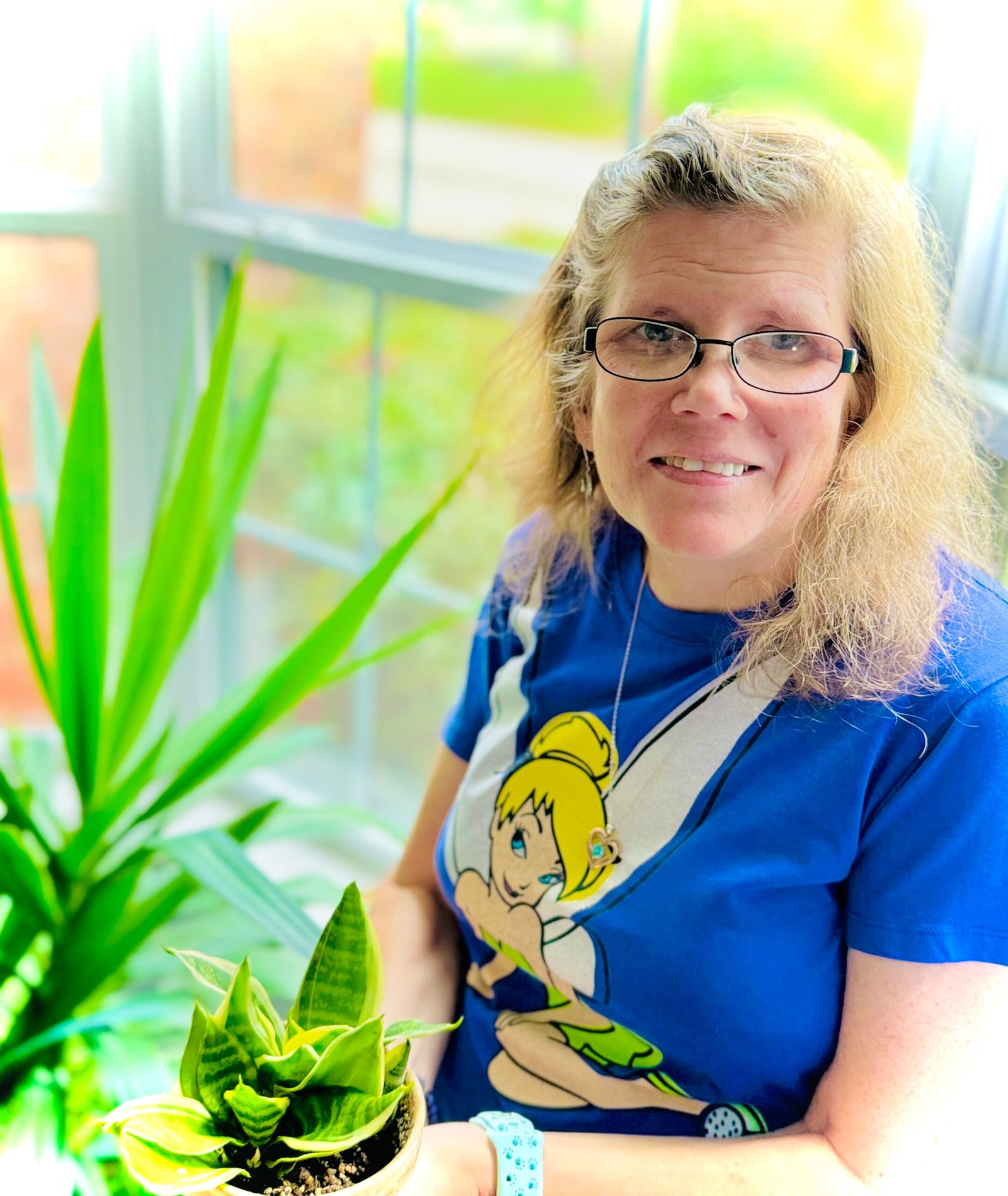In an era defined by evolving housing markets and a growing desire for sustainable, minimalist living, the concept of tiny house communities has emerged as a powerful investment opportunity. This comprehensive guide delves into the multifaceted profitability of developing tiny house communities, exploring the financial advantages, community-centric benefits, and strategic considerations that position this venture as a lucrative and impactful endeavor. From navigating zoning regulations to fostering vibrant resident ecosystems, understanding the intricate layers of this niche market is paramount for maximizing returns and cultivating a successful, long-term asset. This article will equip aspiring developers and investors with the essential knowledge to capitalize on the burgeoning demand for compact, affordable, and community-oriented living spaces.
Table of Contents
The Financial Landscape of Tiny House Community Development
Building Thriving Tiny House Communities: A Blueprint for Success
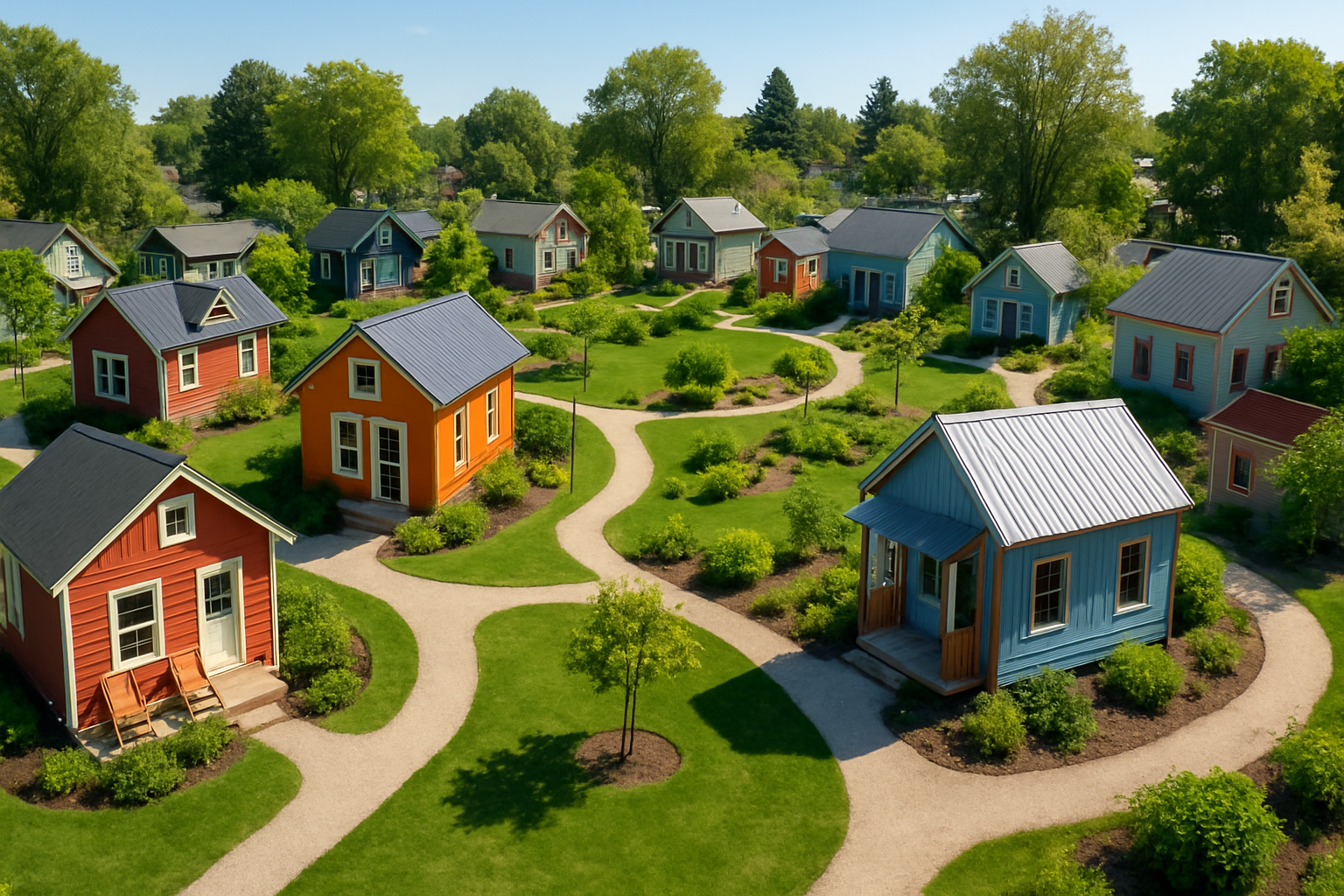
The economic appeal of tiny house communities is rooted in several key factors, primarily driven by lower initial investment costs and accelerated return on investment compared to traditional housing developments. The reduced material and labor expenses associated with constructing smaller dwellings, coupled with the efficient utilization of land, significantly decrease the capital required for project initiation.
Furthermore, the high demand for affordable housing solutions, particularly among millennials, retirees, and those seeking financial freedom, ensures a robust market for tiny house rentals or sales. This consistent demand translates into higher occupancy rates and a steady revenue stream, making tiny house communities an attractive proposition for investors seeking both profitability and social impact. The ability to offer diverse ownership models, including land leases, fractional ownership, or direct sales of tiny homes, further diversifies revenue streams and caters to a broader demographic of potential residents.
Strategic Advantages Beyond Financial Returns
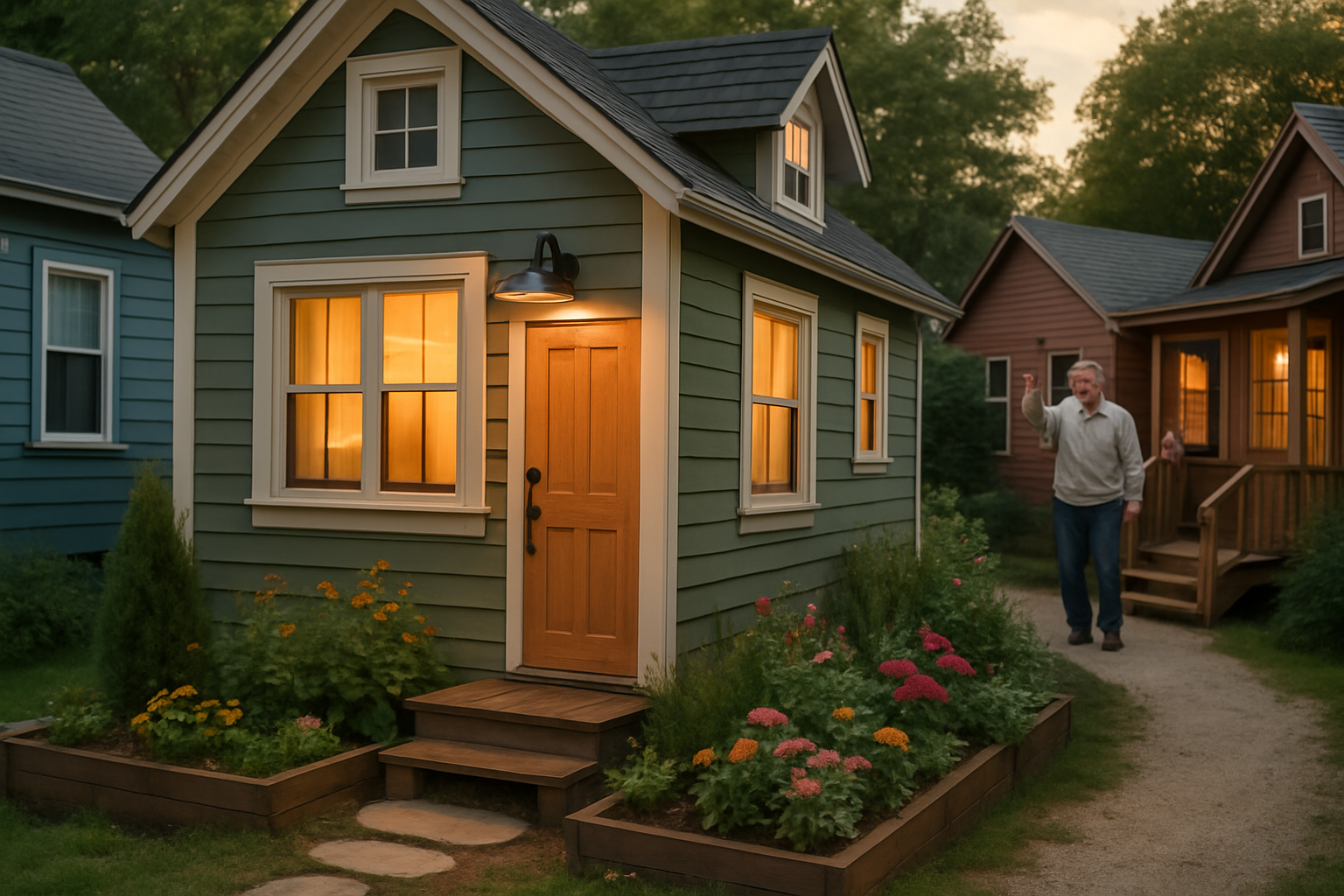
Beyond the compelling financial metrics, building a tiny house community offers a unique blend of strategic advantages that contribute to its long-term viability and appeal. These communities often foster a strong sense of belonging and mutual support among residents, leading to lower tenant turnover and enhanced resident satisfaction. The emphasis on shared amenities, communal spaces, and organized social activities cultivates a desirable living environment that attracts individuals seeking a more connected and purpose-driven lifestyle.
This inherent community spirit can also translate into reduced operational costs, as residents often take a more active role in maintaining shared spaces and participating in community governance. Moreover, tiny house communities frequently align with broader trends in sustainable living, attracting environmentally conscious individuals and potentially qualifying for various green building incentives or certifications. This commitment to sustainability not only enhances the community’s appeal but also contributes to its long-term resilience and value. For more insights into sustainable living, explore our article on Tiny House Outdoor Living and Gardening Ideas: Expanding Your Horizons.
Navigating the Regulatory Landscape: Zoning, Building Codes, and Permitting
One of the most significant hurdles in tiny house community development is navigating the complex and often outdated regulatory landscape. Traditional zoning ordinances and building codes were not designed with tiny homes in mind, leading to challenges in securing permits and approvals. However, a growing number of municipalities are recognizing the benefits of tiny house communities, such as addressing affordable housing shortages and promoting sustainable development. This shift is leading to the adoption of more flexible zoning classifications, including Accessory Dwelling Unit (ADU) ordinances, tiny house-specific zoning, or planned unit developments (PUDs) that allow for smaller lot sizes and alternative housing types.
Developers must conduct thorough due diligence to understand local regulations, engage with planning departments early in the process, and advocate for policy changes where necessary. Collaborating with local officials and community stakeholders can help streamline the approval process and ensure the project aligns with the broader vision for the area. Understanding the nuances of the International Residential Code (IRC) Appendix Q, which provides specific guidelines for tiny houses, is also crucial for ensuring compliance and safety. For more information on the legal aspects of tiny homes, you can refer to articles discussing Are Tiny Houses Legal in Tennessee?.
Overcoming Zoning Challenges
Many traditional zoning laws impose minimum square footage requirements for residential dwellings, effectively prohibiting tiny homes. To overcome this, developers can explore several avenues:
•Accessory Dwelling Unit (ADU) Ordinances: In areas where ADUs are permitted, tiny homes can be developed as secondary units on existing residential lots. This approach often has fewer regulatory hurdles than creating an entirely new community.
•Tiny House Specific Zoning: A growing trend is for municipalities to create specific zoning districts or overlays that explicitly permit tiny homes and tiny house communities. This provides a clear regulatory framework and encourages development.
•Planned Unit Developments (PUDs): PUDs offer flexibility in design and density, allowing developers to propose a comprehensive plan that includes tiny homes, shared amenities, and open spaces, even if it deviates from conventional zoning.
•Advocacy and Education: Developers can play a crucial role in educating local officials and community members about the benefits of tiny homes, such as affordability, sustainability, and community building. This can lead to policy changes and a more favorable regulatory environment.
Adhering to Building Codes and Permitting
Building codes ensure the safety and structural integrity of homes. While tiny homes on wheels are often classified as RVs and fall under RVIA standards, tiny homes on foundations must comply with local building codes. The adoption of IRC Appendix Q has provided a standardized framework for tiny homes, addressing aspects like ceiling heights, emergency exits, and ventilation. Developers must ensure their designs meet these requirements and work closely with building inspectors throughout the construction process. Proper permitting is essential to avoid legal issues and ensure the long-term viability of the community.
Financing Your Tiny House Community Project
Securing financing for a tiny house community can differ from traditional real estate ventures due to the unique nature of the assets. While conventional mortgages may not always apply to individual tiny homes, various financing options are available for the overall development. These include:
•Commercial Real Estate Loans: For larger developments, commercial real estate loans can be obtained from banks or credit unions, often requiring a detailed business plan and a strong financial track record.
•Private Investors and Crowdfunding: Attracting private investors or utilizing crowdfunding platforms can be effective for smaller projects or those with a strong community focus. This allows for greater flexibility and can tap into a network of individuals passionate about tiny living.
•SBA Loans: Small Business Administration (SBA) loans can provide favorable terms for developers, particularly for projects that create jobs or contribute to economic development.
•RV Loans and Personal Loans: For individual tiny homes within a community, residents may utilize RV loans (for tiny homes on wheels) or personal loans. Developers can partner with lenders to offer financing solutions to prospective buyers or renters.
•Grants and Government Programs: Some government programs and grants may be available for affordable housing initiatives or sustainable development projects, which tiny house communities often align with.
Financial Projections and Revenue Streams
Accurate financial projections are critical for attracting investors and securing financing. Key revenue streams for tiny house communities typically include:
•Lot Rent/Lease Fees: Charging residents a monthly fee for the use of their lot within the community.
•Tiny Home Sales: If the developer builds and sells tiny homes directly.
•Rental Income: If the developer owns and rents out tiny homes within the community.
•Utility Fees: Charging for water, sewer, and electricity, often with a markup.
•Amenity Fees: Fees for access to shared facilities like clubhouses, laundry facilities, or recreational areas.
•Resale Value: The potential for appreciation in the value of the land and infrastructure over time.
By carefully forecasting expenses, revenue, and occupancy rates, developers can present a compelling financial case to potential funders. Understanding the nuances of tiny house financing is crucial for both developers and prospective residents. For more information on financing options for tiny homes, you can explore resources on Tiny Home Financing.
Cultivating Community: The Heart of a Thriving Tiny House Village
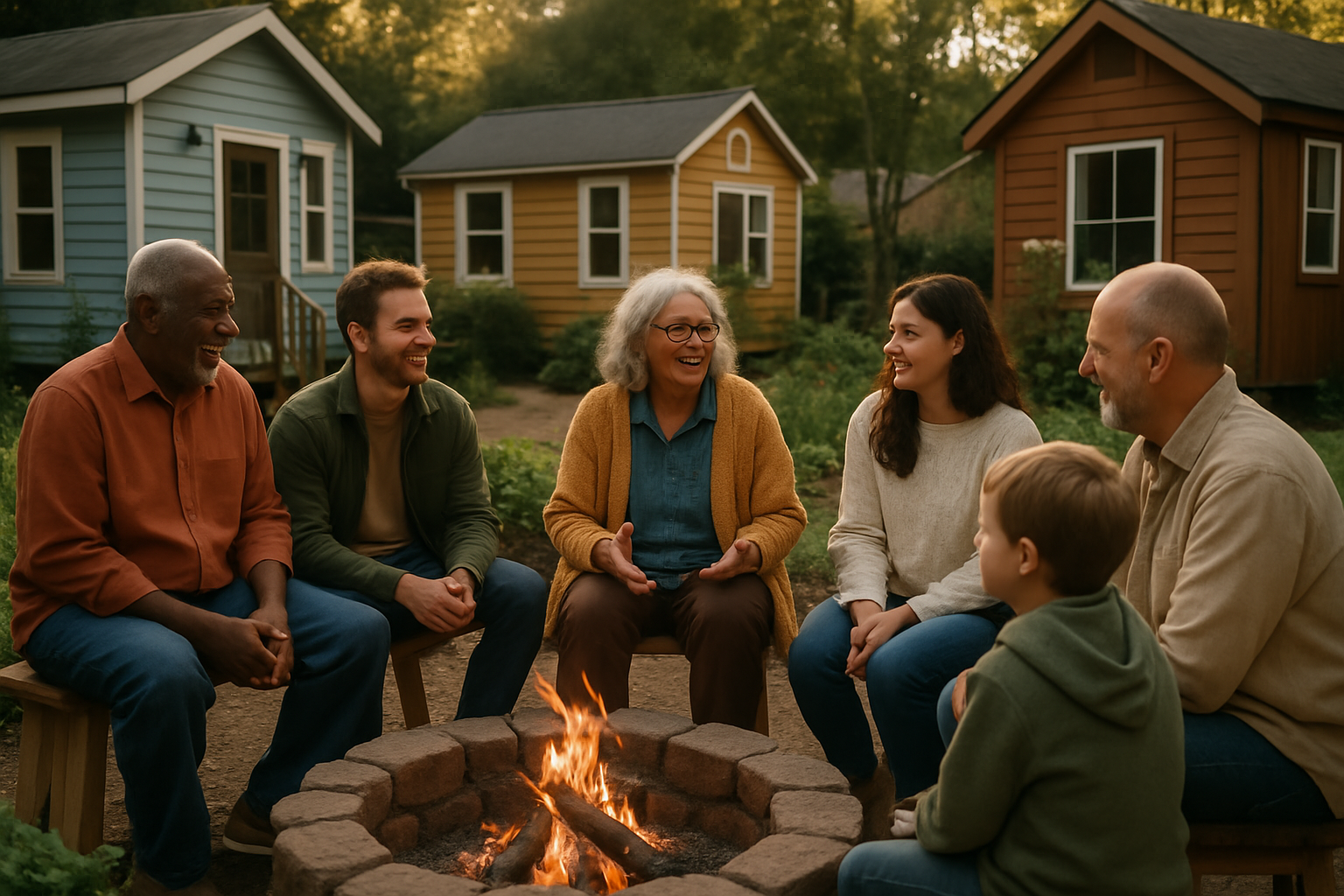
The true value and long-term success of a tiny house community extend far beyond its physical structures; it lies in the vibrant, interconnected social fabric it fosters. Unlike traditional neighborhoods, tiny house communities are often intentionally designed to encourage interaction, shared experiences, and mutual support among residents.
This deliberate cultivation of community spirit is a significant draw for many seeking an alternative to isolated suburban living. Developers can play a pivotal role in shaping this ethos by incorporating communal spaces, organizing events, and establishing clear guidelines for respectful coexistence. From shared gardens and workshops to common dining areas and recreational facilities, these amenities serve as catalysts for connection, transforming a collection of individual homes into a cohesive and thriving village.
A strong sense of community not only enhances resident satisfaction but also contributes to lower vacancy rates and a positive reputation, attracting like-minded individuals who value collaboration and shared values. This focus on community aligns with the broader trend of intentional living, where individuals prioritize meaningful connections and a supportive environment. For ideas on creating shared outdoor spaces, refer to our article on Tiny House Outdoor Living and Gardening Ideas: Expanding Your Horizons.
Designing for Interaction and Shared Experiences
Thoughtful design is fundamental to fostering a strong sense of community. This involves creating spaces that naturally encourage residents to gather, interact, and collaborate:
•Centralized Common Areas: A central clubhouse, community center, or pavilion can serve as the heart of the community, providing space for meetings, events, and casual gatherings. This might include a shared kitchen, lounge area, or even a small library.
•Shared Green Spaces: Well-maintained parks, community gardens, and open green areas provide opportunities for outdoor activities, relaxation, and informal interactions. These spaces can be designed for various uses, from quiet contemplation to lively social events.
•Workshops and Maker Spaces: Offering shared workshops for DIY projects, crafts, or repairs can bring residents together around common interests and skills. This promotes resourcefulness and a sense of collective accomplishment.
•Community Gardens: A shared garden allows residents to grow their own food, learn from each other, and share the bounty. This not only provides fresh produce but also strengthens bonds through shared labor and harvest celebrations.
•Walking Paths and Benches: Integrating pedestrian-friendly pathways and strategically placed benches throughout the community encourages residents to walk, interact, and enjoy the outdoor environment.
Fostering a Sense of Belonging
Beyond physical spaces, cultivating a sense of belonging requires intentional efforts to facilitate social connections and shared governance:
•Community Events: Regularly organized events, such as potlucks, movie nights, workshops, or seasonal festivals, provide structured opportunities for residents to connect and build relationships.
•Resident-Led Initiatives: Empowering residents to initiate and manage their own clubs, activities, or community projects fosters ownership and engagement. This could include a book club, a hiking group, or a committee for maintaining shared amenities.
•Clear Communication Channels: Establishing effective communication channels, such as a community newsletter, online forum, or bulletin board, ensures that residents are informed about events, decisions, and opportunities for involvement.
•Conflict Resolution Mechanisms: Having clear and fair processes for addressing disputes or disagreements helps maintain harmony and ensures that conflicts are resolved constructively.
•Shared Values and Vision: Attracting residents who share a common vision for community living, whether it’s sustainability, minimalism, or a desire for connection, can significantly contribute to a cohesive and harmonious environment.
Design Considerations for Optimal Living and Investment
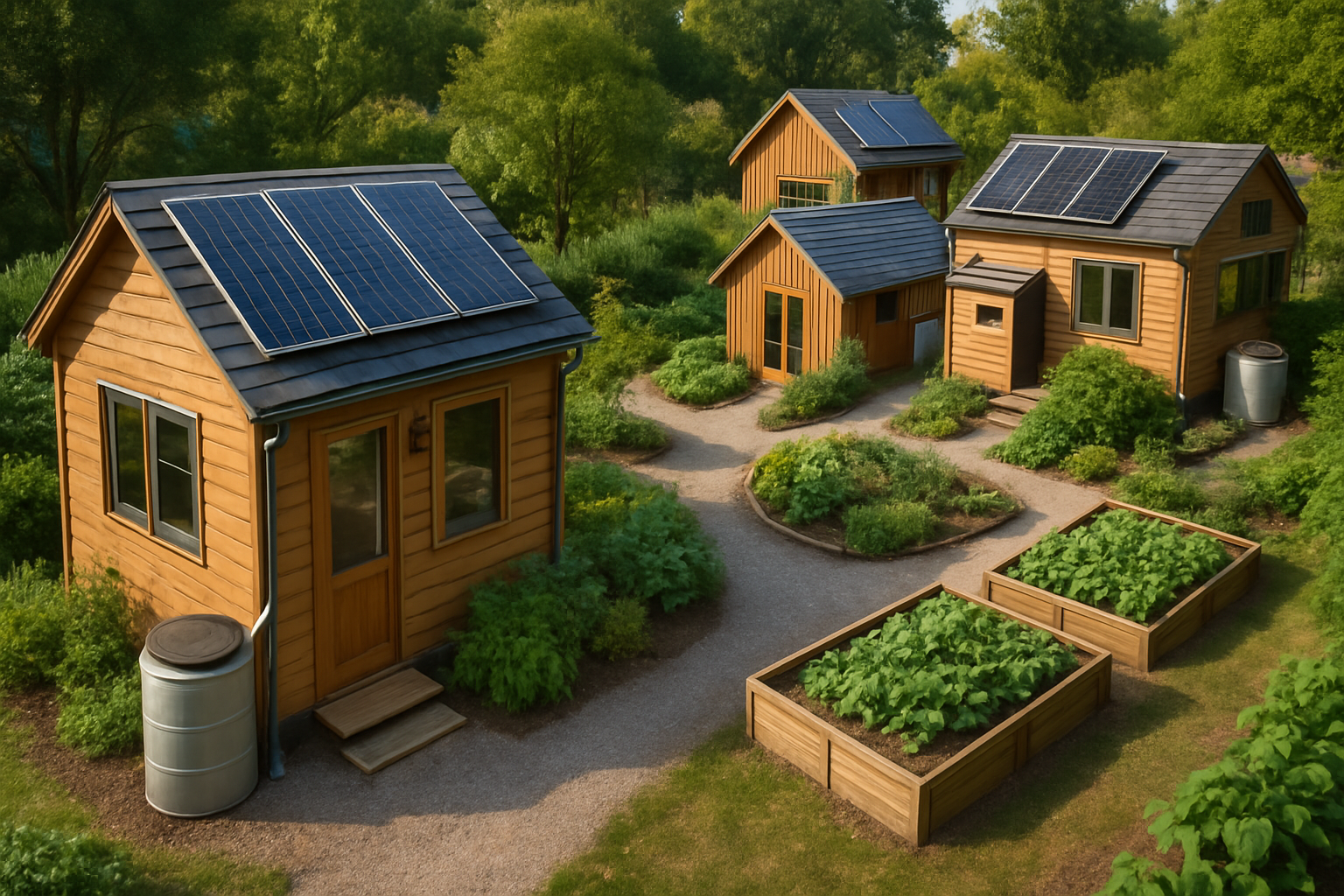
The design of a tiny house community must balance aesthetic appeal with practical functionality, ensuring both resident comfort and long-term investment value. This involves careful planning of infrastructure, layout, and individual home design to create a cohesive and desirable living environment. The goal is to maximize space efficiency, promote sustainability, and enhance the overall quality of life for residents, while also considering the operational and maintenance aspects for the developer. A well-designed community not only attracts residents but also commands higher rental rates or sales prices, contributing directly to profitability. For inspiration on maximizing space within tiny homes, consider our article on 14 Smart Hacks to Make Your Tiny House Feel More Spacious.
Infrastructure and Utilities
Robust infrastructure is the backbone of any successful tiny house community. This includes:
•Utilities: Reliable access to water, sewer (or septic), electricity, and internet is essential. Developers must plan for efficient distribution systems that can accommodate the community’s needs.
•Roads and Parking: Well-maintained internal roads and adequate parking for residents and guests are crucial for accessibility and convenience. Consider permeable surfaces for stormwater management.
•Stormwater Management: Effective drainage systems, including rain gardens or retention ponds, are necessary to manage stormwater runoff and prevent erosion.
•Waste Management: Implement efficient waste collection and recycling programs to promote sustainability and maintain cleanliness.
•Lighting and Security: Adequate lighting throughout the community enhances safety and security, while also contributing to the overall ambiance. Consider security cameras or gated access for added peace of mind.
Layout and Landscaping
The layout of the community and its landscaping significantly impact its appeal and functionality:
•Density and Spacing: While tiny homes allow for higher density, it’s important to maintain adequate spacing between homes to ensure privacy and a sense of openness. Balance density with green spaces.
•Orientation: Orient homes to maximize natural light, passive solar gain, and views. Consider prevailing winds for natural ventilation.
•Landscaping: Thoughtful landscaping enhances the beauty of the community, provides shade, and can help with stormwater management. Use native plants to reduce water consumption and maintenance.
•Privacy Features: Incorporate natural barriers like hedges, fences, or strategically placed trees to provide privacy for individual homes and outdoor spaces.
•Accessibility: Ensure that the community is accessible to individuals with disabilities, including pathways, common areas, and individual homes.
Individual Tiny Home Design
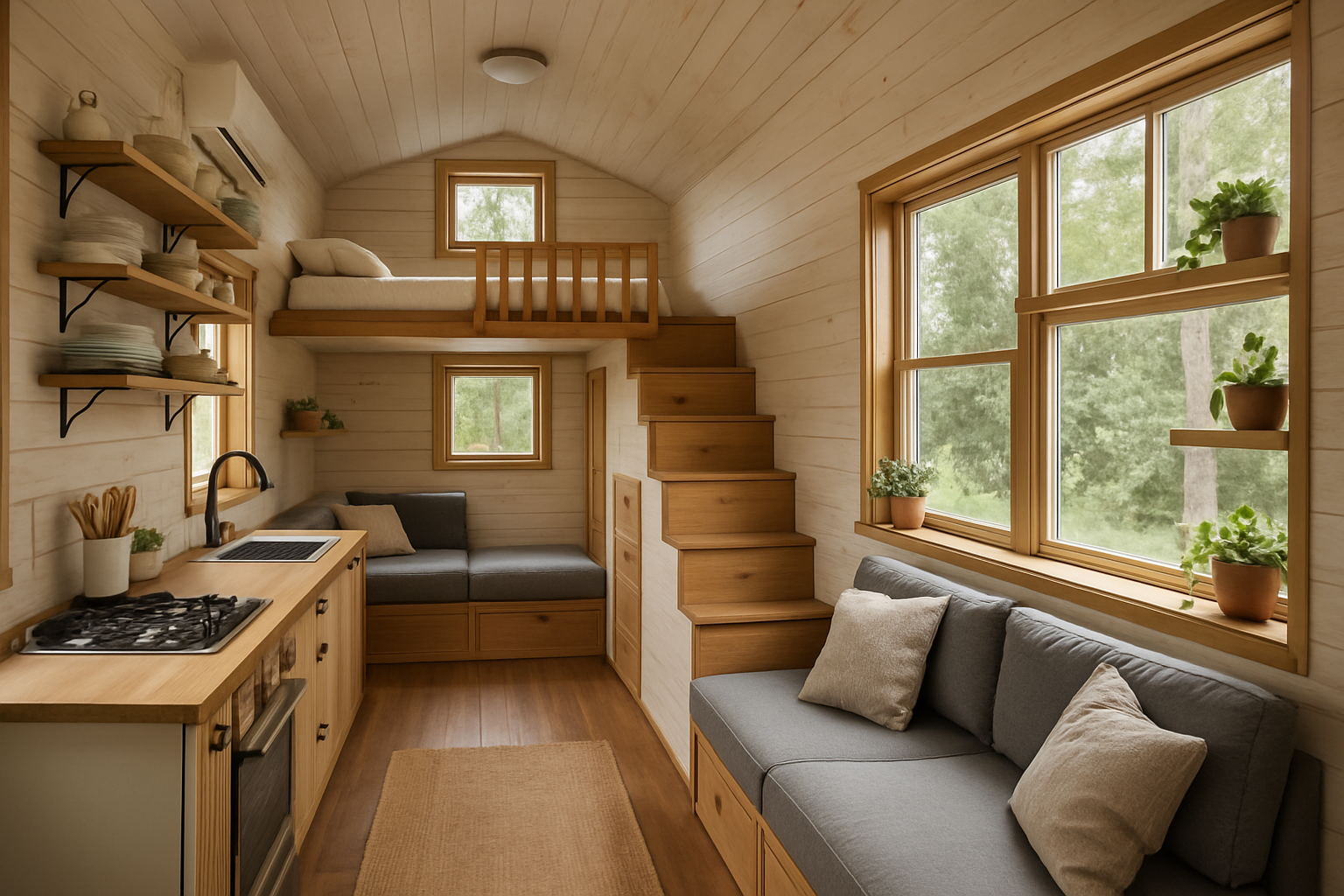
While residents may bring their own tiny homes, developers can also offer pre-designed models or guidelines to ensure a cohesive aesthetic and optimal functionality:
•Size and Footprint: Define clear guidelines for the maximum size and footprint of tiny homes to ensure consistency and compliance with local regulations.
•Architectural Style: Establish an architectural style guide to ensure a harmonious visual aesthetic throughout the community. This doesn’t mean all homes must look identical, but rather that they complement each other.
•Energy Efficiency: Encourage or require energy-efficient designs, including proper insulation, windows, and appliances, to reduce utility costs for residents and promote sustainability.
•Outdoor Living Spaces: Emphasize the importance of integrated outdoor living spaces, suchs as small decks, patios, or porches, to extend the usable living area of each tiny home.
•Storage Solutions: Highlight the importance of clever storage solutions within tiny homes to maximize space and maintain a clutter-free environment. Our article on DIY Tiny House Projects: Personalize Your Small Space on a Budget offers valuable insights into this.
Marketing and Management: Attracting and Retaining Residents

Effective marketing and robust management are crucial for the sustained profitability and success of a tiny house community. Attracting the right residents who align with the community”s values and vision is paramount, as is implementing efficient operational strategies to ensure resident satisfaction and smooth day-to-day functioning.
A well-executed marketing plan will highlight the unique benefits of tiny living within a supportive community, while strong management will foster a positive living environment, leading to high occupancy rates and positive word-of-mouth referrals. This holistic approach ensures the community remains a desirable place to live, thereby securing its long-term financial viability. For insights into creating appealing living spaces, refer to our article on Tiny House Interior Design Trends 2025: Where Style Meets Functionality.
Targeted Marketing Strategies
Reaching the ideal demographic for a tiny house community requires targeted marketing efforts:
•Online Presence: Develop a professional website showcasing the community’s unique features, amenities, and available homes/lots. Utilize high-quality photos and virtual tours. Optimize for search engines using relevant keywords like “tiny house community,” “affordable living,” and “sustainable housing.”
•Social Media Engagement: Leverage platforms like Instagram, Facebook, and Pinterest to share compelling visuals and stories about community life. Engage with potential residents by responding to comments and messages. Pinterest, in particular, is excellent for visual content related to tiny homes.
•Tiny House Expos and Events: Participate in tiny house shows, expos, and local community events to connect directly with interested individuals. This provides an opportunity to showcase models, answer questions, and build relationships.
•Partnerships: Collaborate with tiny home builders, real estate agents specializing in alternative housing, and financial institutions to reach a wider audience. Offer referral programs or joint marketing initiatives.
•Content Marketing: Create valuable content, such as blog posts, videos, and guides, that address common questions and concerns about tiny living and community life. This positions the community as a thought leader and attracts organic traffic.
•Testimonials and Resident Stories: Feature testimonials and stories from satisfied residents to build trust and demonstrate the positive impact of community living. Authentic narratives are powerful marketing tools.
Efficient Community Management
Effective management ensures the smooth operation of the community and high resident satisfaction:
•Clear Rules and Regulations: Establish a comprehensive set of rules and regulations that govern community living, covering aspects like noise, pets, maintenance, and shared amenity usage. These should be clearly communicated to all residents.
•On-Site Management/Community Manager: For larger communities, an on-site manager can handle day-to-day operations, address resident concerns, organize events, and enforce rules. This provides a direct point of contact for residents.
•Maintenance and Upkeep: Implement a proactive maintenance schedule for common areas, infrastructure, and landscaping. A well-maintained community enhances its appeal and protects property values.
•Financial Management: Implement robust financial systems for collecting lot rents, managing expenses, and tracking profitability. Regular financial reporting is essential for informed decision-making.
•Resident Communication: Maintain open lines of communication with residents through regular newsletters, community meetings, or an online portal. Address concerns promptly and transparently.
•Community Building Programs: Continue to foster community spirit through ongoing events, workshops, and resident-led initiatives. A strong sense of community reduces turnover and creates a positive living environment.
The Future of Tiny House Communities: Trends and Opportunities
The tiny house movement is not a fleeting trend but a significant shift in housing preferences, driven by economic realities, environmental consciousness, and a desire for simpler living. As this movement matures, tiny house communities are poised for continued growth and innovation. Understanding emerging trends and identifying new opportunities will be key for developers seeking to maximize long-term profitability and societal impact. The future of tiny house communities lies in their adaptability, their ability to integrate sustainable technologies, and their potential to address diverse housing needs. This forward-looking perspective ensures that investments made today will continue to yield returns in the evolving housing landscape.
Emerging Trends
Several trends are shaping the future of tiny house communities:
•Increased Legal Acceptance: More municipalities are likely to adopt tiny house-friendly zoning and building codes as the benefits become more apparent. This will reduce regulatory hurdles and open up new development opportunities.
•Focus on Sustainability: Communities will increasingly integrate advanced sustainable features, such as net-zero energy designs, extensive rainwater harvesting, and permaculture principles. This aligns with resident values and can offer long-term cost savings.
•Diverse Community Models: Beyond traditional ownership or rental models, we may see more co-housing arrangements, land trusts, and cooperative ownership structures emerge, offering more accessible pathways to tiny living.
•Aging-in-Place Solutions: Tiny house communities can provide ideal solutions for seniors seeking affordable, low-maintenance housing with built-in social support. Designs will increasingly cater to accessibility needs.
•Integration with Mixed-Use Developments: Tiny house communities may become part of larger mixed-use developments, offering residents access to commercial services, public transportation, and employment opportunities.
•Technological Integration: Smart home technologies, efficient energy systems, and advanced waste management solutions will become more prevalent, enhancing comfort and sustainability.
New Opportunities
Developers can explore various opportunities within the expanding tiny house market:
•Specialized Communities: Develop communities tailored to specific demographics or interests, such as artist communities, eco-villages, or communities for digital nomads.
•Tiny House Resorts/Vacation Rentals: Capitalize on the growing tourism interest in tiny homes by developing communities that offer short-term rentals, providing an additional revenue stream.
•Educational and Workshop Hubs: Create communities that also serve as educational centers for tiny living, offering workshops on construction, sustainable practices, and minimalist living.
•Partnerships with Non-Profits: Collaborate with non-profit organizations to develop affordable tiny house communities for vulnerable populations, leveraging grants and social impact investments.
•Modular and Prefabricated Solutions: Utilize modular and prefabricated tiny homes to accelerate construction timelines, reduce costs, and ensure consistent quality.
•Consulting and Advisory Services: Offer expertise to other developers or municipalities interested in establishing tiny house communities, providing a new revenue stream through consulting.
Conclusion: A Profitable and Purposeful Venture
Building a tiny house community is more than just a real estate development; it’s an investment in a lifestyle, a community, and a sustainable future. The financial returns are compelling, driven by lower development costs, high demand, and diverse revenue streams. Beyond the economics, these communities offer significant strategic advantages, fostering strong social bonds, promoting sustainable living, and addressing critical housing needs. While navigating regulatory complexities and securing financing requires diligence, the growing acceptance of tiny homes and the increasing demand for intentional living spaces present a fertile ground for innovation and profitability.
By focusing on thoughtful design, robust management, and a genuine commitment to community building, developers can create not only financially successful ventures but also vibrant, thriving ecosystems that enrich the lives of their residents and contribute positively to the broader housing landscape. The journey to profit from building a tiny house community is one that promises both financial reward and profound purpose.
Related Articles:
•Tiny House Interior Design Trends 2025: Where Style Meets Functionality
•DIY Tiny House Projects: Personalize Your Small Space on a Budget
•14 Smart Hacks to Make Your Tiny House Feel More Spacious
•Seventable 47.2″ Lift Top Coffee Table – The Ultimate Multi-Functional Hub for Tiny Homes
•Are Tiny Houses Legal in Tennessee?
•Tiny House Outdoor Living and Gardening Ideas: Expanding Your Horizons
